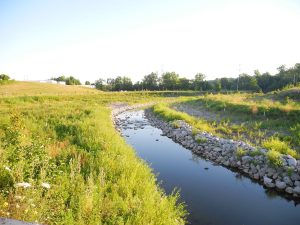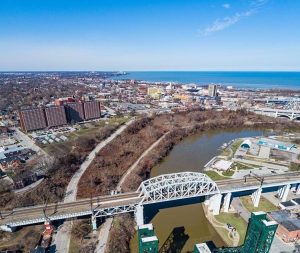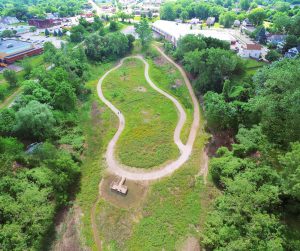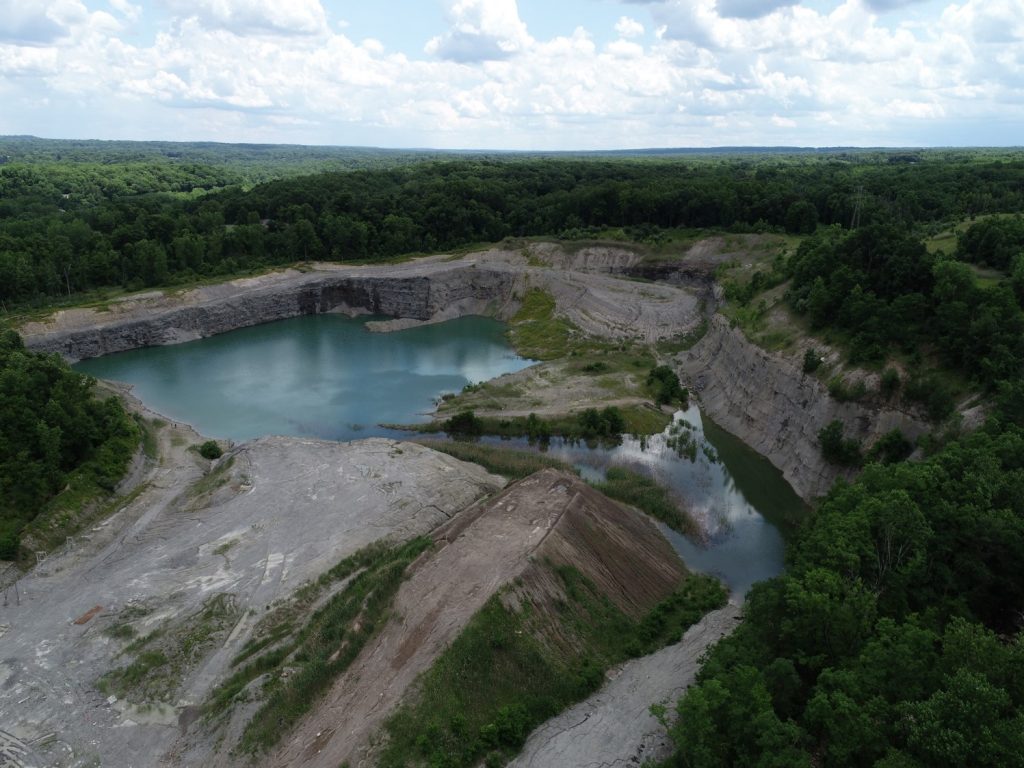Originally founded by residents in 1997 and later incorporated as a nonprofit organization, the West Creek Conservancy is working to protect, reclaim and restore local natural areas, open spaces, streams and waterways in Greater Cleveland/Northeast Ohio for the benefit of the entire region. In this blog, the latest in our Stories of Impact series, we discuss the West Creek Conservancy’s work with Executive Director Derek Schafer.
What is the West Creek Conservancy’s mission?
 Derek Schafer: On paper, our mission is to enrich the lives of all people in Northeast Ohio by conserving natural habitats, restoring the ecological value of our region’s lands and waters, and expanding opportunities to connect people from all cultures to experience nature and discover our great outdoors.
Derek Schafer: On paper, our mission is to enrich the lives of all people in Northeast Ohio by conserving natural habitats, restoring the ecological value of our region’s lands and waters, and expanding opportunities to connect people from all cultures to experience nature and discover our great outdoors.
It is quite a loaded mission statement, but it boils down to protect, restore and connect. Protecting land and water resources or other assets within the community; restoring ecological integrity or functionality; and the connection can be a social connection to the land and water, or a physical connection, linking trails and greenways.
Why is equitable access to green space important in Northeast Ohio?
Derek: Our land and water resources are our infrastructure; they are the thread in which our community operates and is held together. Land conservation is the underpinning of our region and is the natural corridor that filters our air, treats our water, provides recreation opportunities and allows us all to connect to the natural world
Land and water conservation is also imperative to a sustainable and thriving region. You cannot have spaces that are only accessible from cars; you need spaces that can be equitably accessed. We are a part of that ecosystem and we should not be an adverse impact to it – it should be rather symbiotic. You can absolutely put grey infrastructure and green infrastructure together; there shouldn’t be a reason why we separate these things.
Can you share some current projects that you are particularly excited about?
 Derek: The Irishtown Bend in downtown Cleveland. We were brought in as a partner to help acquire real estate between West 25th & Columbus Road, Detroit Avenue, and the river. Our purpose was to assemble the land in a way that the Port Authority could initiate the stabilization of the hillside. We were also concerned with how to properly assemble the land so that the other partners can do their part as well. It was a real synergy of how partnerships could work together.
Derek: The Irishtown Bend in downtown Cleveland. We were brought in as a partner to help acquire real estate between West 25th & Columbus Road, Detroit Avenue, and the river. Our purpose was to assemble the land in a way that the Port Authority could initiate the stabilization of the hillside. We were also concerned with how to properly assemble the land so that the other partners can do their part as well. It was a real synergy of how partnerships could work together.
Another project that I am very anticipatory about is a little outside of Cleveland, in Rootstown, Ohio. We’re formalizing the acquisition of a Tamarack bog, which was the last place in Ohio where the plant Labrador Tea was found. For decades, multiple agencies, entities and nonprofits, have tried to acquire this 170-acre piece along Breakneck Creek. With the help of the expertise within this organization, we were able to get this piece under contract and leverage the funding to acquire it. In addition to this land, we have reached out to Holden Arboretum and Klyn Nurseries, who we believe to have the last cuttings of Labrador Tea. Our goal with this is to bring it full circle and reintroduce an endangered species to a site that was up for private development.
In addition to these two tasks, at the end of 2020, we also closed and acquired the last two remaining parcels of land that make the western and eastern connection to the West Creek Reservation and Greenway Trail System. These are properties that we have been trying to acquire since around 2005. These 25 acres of land may not sound like a lot, but when you have 20,000 residents who live within one mile, that is a big deal.
In 2019, the Cleveland Foundation supported the West Creek Conservancy with a $200,000 grant to expand their real estate portfolio. How has this funding supported the West Creek Conservancy?
Derek: The best way to describe the funding from the Cleveland Foundation is to say it has served as a catalyst for us to leverage millions of dollars, expand partnerships, and internal capacity, which overwhelmingly has helped us provide a niche service throughout NEO. More specifically, we were able to solidify the support from the Ohio EPA directly to the Central Lake Erie Basin Collaborative because we were able to show that our distribution of work was equitably dispersed throughout a dozen different groups covering hundreds of square miles. In essence, this funding was catalytic to a perpetual generational impact.
What is your vision for the West Creek Conservancy in the next 10 years?
Derek: I would like for us to be a sustainable organization, fulfilling a niche set of services throughout Northeast Ohio. Our impact cannot be measured by acreage, nor can it be measured by the number of staff members. It can be measured by the lands we protect, how we are protecting them, and for whom are we making such efforts.
I would also want for us to continue to be a catalyst in Northeast Ohio for land and water conservation and a tool for partners and stakeholders throughout the region so we can more sustainably protect, restore and activate these spaces that are accessible throughout our region.
 How can people get outside and enjoy the greenspaces?
How can people get outside and enjoy the greenspaces?
Derek: One of the first things that I always tell people is to get connected with your outdoors; visit your parks, trails and greenways; take a look at the natural world around you and recognize the value in it. Connect with nature a little more and look up how you can get involved with a local watershed group.
Get involved with your community and pay attention to policy changes – your vote counts. It is important to pay attention to your candidates’ stance on land, air and water resources. Take a vested interest in the natural world and make sure to leave the land better than you found it, and leave no trace when visiting.
I’d like to also mention that throughout 2021, West Creek Conservancy will be hosting a number of guided tours and hikes of spaces that are not publicly accessible yet.
Is there anything that you would like to emphasize?
Derek: There is progress through partnerships and there are so many people doing great things, but if we do not focus on each other’s unique skillsets, resources and expertise, then we can run into brick walls and opportunities are lost. The more we catalyze one another’s efforts, resources and portfolio of services, the greater the impact is going to be.
Want to help? Support the West Creek Conservancy here.




